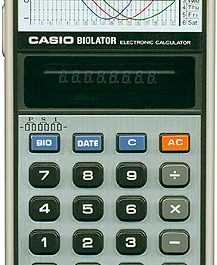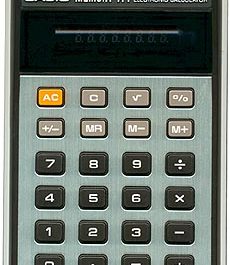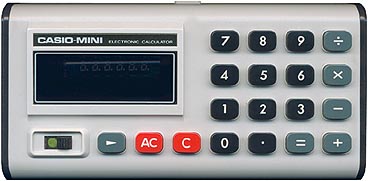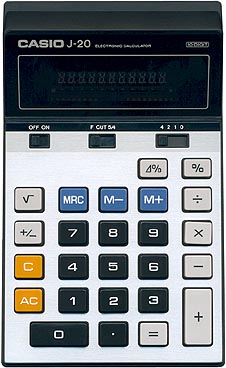
The Casio J-20 is a handheld calculator introduced in 1985 by Casio Computer Co., Ltd. This chunky desktop calculator features a large, slightly wedge-shaped case made from a combination of matte and glossy black plastic. The raised and tilted display area has a neutral plastic filter, framed in black, with the brand and model number printed in white text with a border.
The brushed aluminum keyboard surround is printed in black and silver with reversed-out text for the switch labels. The large, squashy keys have a return click and individual key escutcheons, typical of Casio calculators of that era.

Measuring approximately 100mm x 164mm x 30mm (width, height, depth), the Casio J-20 is powered by two AA batteries or an optional 3V DC 0.25W adapter (type AD-2S) through a socket on the top left side. It features a 10-digit blue vacuum fluorescent display (VFD) with an eleventh digit for negative, error, and memory indication, as well as upper tick marks for thousand separators.
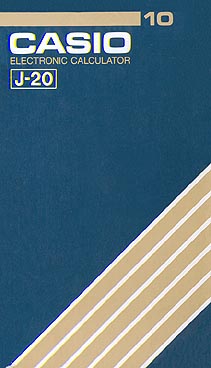
The calculator offers standard four functions (addition, subtraction, multiplication, and division) with percentage, differential percentage, square root, change sign, and four-function memory. It also includes switched decimal points and rounding modes.
Under the hood, the Casio J-20 is equipped with a Hitachi HD38401A 5J45 CPU (dated September 1985), a single flat-faced 11-digit VFD tube (FIP 11H5 No.4-1 8), two transistors, seven diodes, eight capacitors, four resistors, and a TDK TC-81 59 transformer. The main CPU board (G862-1 A36267-1) is connected to the front-fixed keyboard assembly via a 24-way ribbon cable.
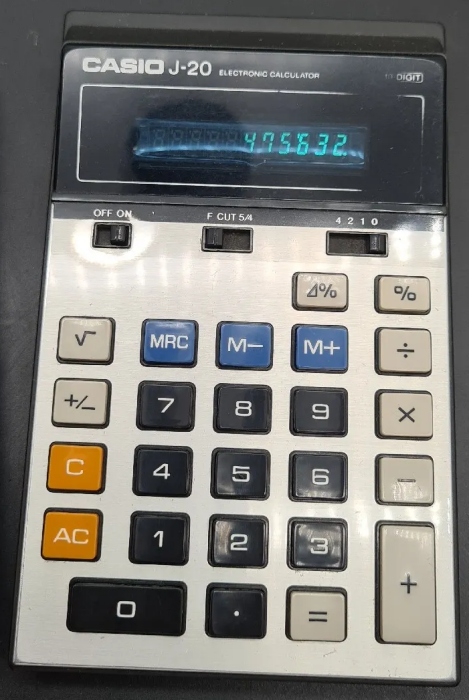
Logic:
- (C) is used to cancel the last number entered, and (AC) to clear the whole calculator.
- Input overflow is not suppressed, but (C) allows you to input another number in a chain.
- Negative numbers are represented by a “-” in the far left (eleventh) digit, allowing full ten-digit negative numbers.
- There is automatic constant on multiply and divide only.
- Overflow shows the result and “C” (or “E” if negative) in the far left (eleventh) digit and is recoverable using (C).
- Divide by zero shows zero and “C” in the far left (eleventh) digit and is not recoverable.
- The change sign can be used in mid-number entry.
- Square roots of negative numbers are not allowed and result in the answer and “E” in the far left (eleventh) digit, recoverable using (C), which gives you a negative number.
- A switch changes the fixed decimal mode from 0, 1, 2, or 4 decimal places.
- Another switch selects between floating decimal [F], round down [CUT], and round up/down [5/4].
- Memory store is indicated by the decimal point of the far left (eleventh) digit.
- (MRC) will clear the memory with the second press.
- The delta percent key acts as a mark-up key.

The Casio J-20 calculator, while lacking some advanced features, offers a solid set of basic functions and a sturdy, well-designed case, making it a reliable desktop companion for basic calculations.
